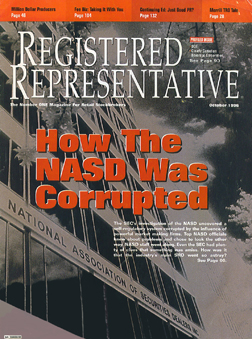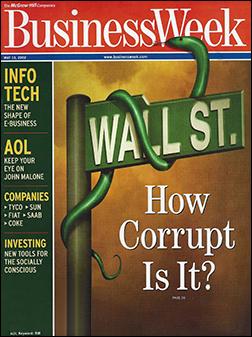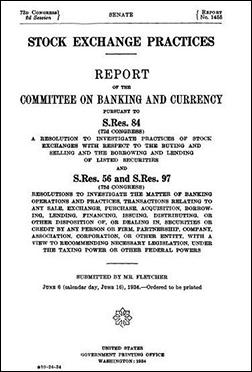By Pam Martens: April 3, 2014
Michael Lewis is getting a dose of the backlash typically reserved for Wall Street whistleblowers. To judge from the reaction to his new book, “Flash Boys,” which lays out how the stock market is rigged by high frequency traders, you’d think that his charge that the U.S. stock market has been corrupted is the fanciful musing of an unhinged mind.
Lewis underwent a prosecutorial style interview on CNBC; Tweeters charged him with assorted evils; the Wall Street Journal quickly ran an OpEd titled “High-Frequency Hyperbole” in which Clifford Asness and Michael Mendelson from hedge fund AQR Capital – the ultimate in trustworthy sources — attempted to move folks along, nothing to see here, with the emphatic proclamation that “The stock market isn’t rigged…”
The cold, hard facts backed by 80 years of copious documentation, like cancelled checks from the 1930s’ Senate hearings, where business journalists were bribed to tout stocks, and scandalous emails from the 1990s where stock analysts called the companies “crap” and “dogs” in internal emails while lavishing praise on the offerings to an unsuspecting public, is that the stock market has been rigged, in one way or another, throughout much of U.S. history.
In August 1996, the Securities and Exchange Commission brought charges against the Nasdaq stock market for conspiring to rig stock prices while its self-regulator, the National Association of Securities Dealers (NASD), failed to carry out even the most basic of its duties due to the influence of its Wall Street cronies who ran the NASD. The rigging dated back over a decade and potentially a lot longer.
Audio-taped calls released by the SEC at the time caught traders conspiring to manipulate prices and engaging in harassment against any traders who were reluctant to go along. The tapes also showed traders agreeing to move the price of a stock to help a competitor or create the false impression of buying interest in order to unload unwanted stock inventory off the books of a Wall Street firm.

The October 1996 Cover of Registered Rep Magazine Dealt With a Decade of Price Fixing On the Nasdaq Stock Market; Traders' Taped Calls Showed a Cartel That Manipulated Market Prices to Make Profits for the House.
The U.S. Justice Department brought a companion civil suit which it settled against 24 securities firms who were charged with colluding to inflate their profits on Nasdaq trades. At the time, U.S. Attorney General Janet Reno said: “As a result of this conduct, American investors had to pay more to buy and sell stocks than they would have if there had been true competition. We have found substantial evidence of coercion and other misconduct in this industry.”
The Nasdaq rigging might have continued unabated had it not been for two university professors. The Justice Department’s investigation was triggered by an in-depth study by Professors William Christie of Vanderbilt University and Paul Schultz of Ohio State University that created a lot of media buzz and forced regulators to act.
On April 28, 2003, the SEC settled enforcement actions against many of the very same firms that were charged earlier with rigging Nasdaq for issuing rigged stock research in violation of securities laws.
The PBS program Frontline dedicated a documentary to this era of market rigging on May 8, 2003, appropriately titled “The Wall Street Fix.” Correspondent Hedrick Smith says on camera: “It’s a story of pervasive corruption here on Wall Street, how brokers and analysts shaped and hyped the telecom boom, pocketed enormous profits and then took millions of ordinary investors on a catastrophic ride, $2 trillion in losses on WorldCom and other telecom stocks.”
David Chacon, a former Salomon Smith Barney broker (then a unit of mega bank Citigroup) appears on the Frontline program and explains how the company was winning investment banking deals. “These [Initial Public Offering, IPO] shares would rise by, you know, 30, 40, 50, 100 percent the first day,” says Chacon. “So that, in itself, is free money. But Salomon took it to another level. Oftentimes, they did not allocate these shares until after the stock had been trading. Salomon would be able to call these same officers and directors, saying, ‘Look, I have,’ you know, ‘20,000 shares of this company. It’s trading at $85 right now, and wanted to give you,’ you know, ‘the opportunity to invest at the IPO price.’ ”
Was this an ingenious new form of market fraud? Unfortunately not. It had been around since the corrupt Wall Street market of the late 1920s.
In the frothy 1920s bull market, the biggest Wall Street firms maintained what they called “Preferred Lists” for distributing hot IPOs. One name on the list was William Woodin, who later became Secretary of the Treasury under President Roosevelt. On February 1, 1929, JPMorgan sent Woodin the following letter:
“My Dear Mr. Woodin:
You may have seen in the paper that we recently made a public offering of $35,000,000 Alleghany Corporation 15-year collateral trust convertible 5 per cent bonds, which went very well…We have kept for our own investment some of the common stock at a cost of $20 a share…we are asking some of our close friends if they would like some of this stock at the same price it is costing us, namely, $20 a share. I believe that the stock is selling in the market around $35 to $37 a share…We are reserving for you 1,000 shares at $20 a share, if you would like to have it.”
After the 1929 crash and the onset of the Great Depression, the U.S. Senate’s Committee on Banking and Currency spent two solid years, 1932 to 1934, deconstructing the pervasive corruption that touched every facet of the stock exchanges and the big Wall Street banks. Unlike today’s Senate Banking hearings where the room is typically devoid of more than two or three Senators, back then Senators were engaged and came prepared with subpoenaed evidence. The public learned through front page headlines that Wall Street CEOs were funneling money into secret trusts to pump stocks to elevated levels and then dump them on unsuspecting public investors; shorting their own bank stocks when the market started to dive; and bribing politicians to look the other way with gifts of hot IPOs that had already soared in price.
The inside flap of Michael Lewis’ “Flash Boys,” gives a telling summary of the contents: “ ‘Flash Boys’ is about a small group of Wall Street guys who figure out that the U.S. stock market has been rigged for the benefit of insiders and that, post-financial crisis, the markets have become not more free but less, and more controlled by the big Wall Street banks.”
And that’s the real shocker in all of this. These serially corrupt Wall Street banks crashed the U.S. economy to smithereens just five years ago and instead of showing remorse and making amends, they’re partying like it’s 1928, rigging everything from the interest rate benchmark Libor to foreign exchange trading to commodity and stock prices.
And while all of this is happening, there has yet to be any ongoing, comprehensive investigations by the U.S. Senate Banking Committee that looks at the overall plumbing of our deeply disfigured financial marketplace.



